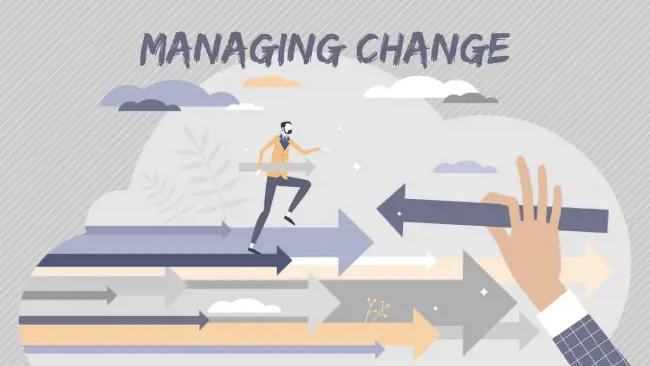
In today’s complex business world, change is hard. Companies venturing through major culture shifts, mergers or other forms of change often struggle to make it to the end.
The idea that people hate change is a phenomenon that is taught, coached and wrestled with in many ways, shapes, and forms. Regardless of your mindset about CHANGE, there is one vital aspect you should explore.
PROGRESS is what you should be focused on. Change for the sake of change is meaningless. However, progress toward a new goal or achievement is more vital and more valuable to your organization.
Dean Lindsay, America’s premier authority on Progress, writes:
All progress is change, but not all change is progress.
Lindsay uses an illustration. If you wake up in the morning with a stomach ache, you want to change. You want it to go away.
If you tell a friend and they punch you in the nose, you got a change. But it wasn’t progress toward curing your stomach ache.
There are voices in the media demanding change. The word has been worn out. Again, change for the sake of change is not progress.
When you sense the need for change or you design an intentional change in the way your business operates, be sure you are designing progress toward a new goal.
I know companies who have launched major change initiatives (they call it that) with the intent to become more profitable, increase margin, find efficiencies, or become more competitive.
Those are great objectives.
Yet what they are really saying is we need progress forward to be better situated for Growth and survival in our industry.
Too often the well-intended change that is initiated gets bogged down in all the adoption and adaptation process. As soon as the change feels hard and resistance begins to mount, plans are adjusted.
Many times the shift is pulled back or canceled in the face of resistance.
Roxanne Chugg writes: “The fact is that most change initiatives are done “to” employees, not implemented “with” them or “by” them. Although leaders are pushing behavior change from the top and expecting it to cascade through the formal structure, an informal culture left to instinct and chance will likely dig in its heels and resist or even hijack the change.”
There is a popular model that describes the change cycle. Dr. Virginia Satir first introduced this model when explaining emotional life-change events in family Therapy. However, it has been widely adopted in change management circles to help businesses plan for and implement change.
The “S” shape of this curve helps us see the complexity of making a change. When applied to a work team, each member of the team will experience their own progression through the curve, each moving at their own pace.

The key matter here is that everyone in the organization faces their own emotional curve when forced into change. Acceptance or adoption of the change is dependent upon the progress one can make moving through the curve.
If plotted together on a single graph you could see the lag points where the manager/leader may be further along the curve than his people. If the leader is not sensitive to this lag factor, then the message from the top might be skewed.
Given the tremendous effort and disruption a change may cause at work, leaders must be mindful of the progress being made.
Leaders need to ask: “Is the company moving ahead because of this change or are we merely spinning our wheels, burning out the staff, and creating very little value?”
Question: What change initiative has your company gone through recently? Or were you the one directing it?
The post Change and Progress, Are They Twins? appeared first on Business Advisor and Executive Coach | Doug Thorpe.
Notifications
 Back to Progress
Back to Progress